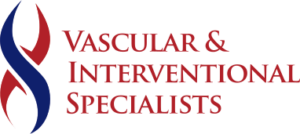Patient Education
How To Treat Venous Reflux Disease
Venous disorders, including venous reflux disease, are progressive, meaning they get worse over time if left untreated. Venous reflux disease occurs when veins cannot circulate blood effectively. It affects the veins in the legs, causing blood to pool and other serious issues. Read on to learn more How to Diagnose And Treat Venous Reflux Disease…
Read MoreWhat Is An Endoleak? Symptoms And Treatments
While an aneurysm repair procedure can effectively treat bulged and swelling blood vessels, patients may still be at risk of endoleaks. This complication causes an aneurysm to grow larger and even rupture. Learn more about the basics of endoleaks, including endoleak definition, symptoms, and treatments. What is An Endoleak? An endoleak is a common complication…
Read MoreHow To Assess Pedal Pulses And Where To Check Them
In trauma assessment, finding and verifying a pedal pulse is necessary. These actions are performed before and after placing a lower extremity splint and the immobilization of the backboard for a long time. Patients on a backboard or in a lower extremity splint should have their pedal pulse checked as part of their continuous assessment.…
Read MoreWhat Does Femoral Artery Pain Feel Like | Causes, Symptoms & Risk Factors?
If you suffer cramping, tingling, or numbness in your legs, you may have femoral artery pain or peripheral artery disease. Worse, severe cases of this illness can lead to leg or foot amputation and heart attack or stroke. The importance of timely detection cannot be overlooked. Read on to learn more about femoral artery pain,…
Read MoreHow to Choose the Right Vascular Surgeon
If you are suffering from any type of vascular condition, it is important to choose the right surgeon to treat your unique issue. At Vascular & Interventional Specialists, we provide patients across Nebraska, Iowa, and South Dakota with expert screening, diagnosis, and leading-edge treatment options. Our team of specialists pride themselves on being well-respected experts…
Read MoreFour Signs You May Need Surgery for Your Vascular Condition
When you are living with a vascular condition every day, you know best how your symptoms are affecting your life, and are aware of any major changes that are happening with your health. Vascular & Interventional Specialists understands how vital it is to connect patients in Nebraska, Iowa, and South Dakota with the state-of-the-art screening,…
Read MoreHow Vascular & Interventional Specialists Support The Community
Vascular and Interventional Specialists started its practice in 2020 right before the Covid-19 pandemic and it has been dedicated to exemplary community service since those very trying times. Our team of doctors, nurses, and staff believe in the transformational power of communities and their ability to withstand anything if given the right support. At Vascular…
Read MoreShould You Have A Hysterectomy If You Have Fibroids?
A hysterectomy is a major surgery that involves removing the uterus entirely, and the decision to undergo this surgery should not be taken lightly. While it can be an effective treatment for uterine fibroids, it’s not the best choice for everyone due to the serious nature of its undertaking. Let’s explore the pros and cons…
Read More








